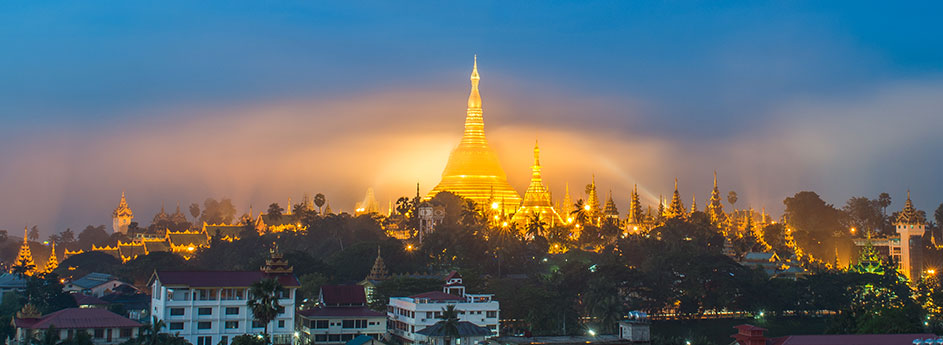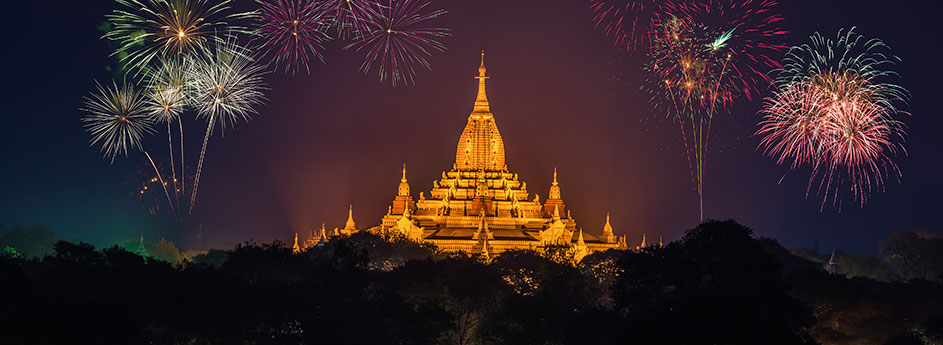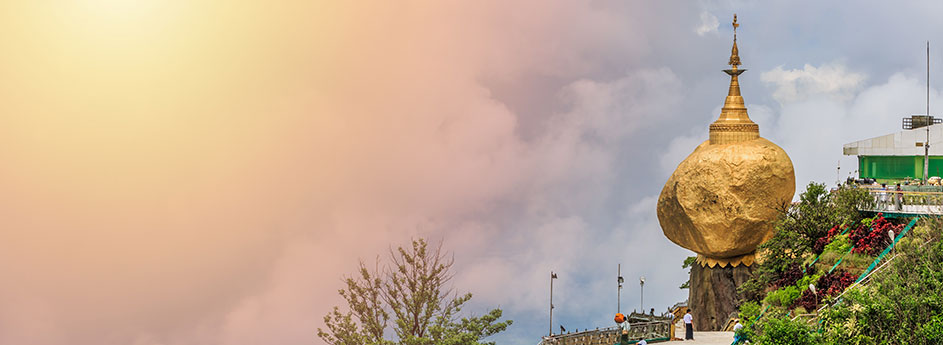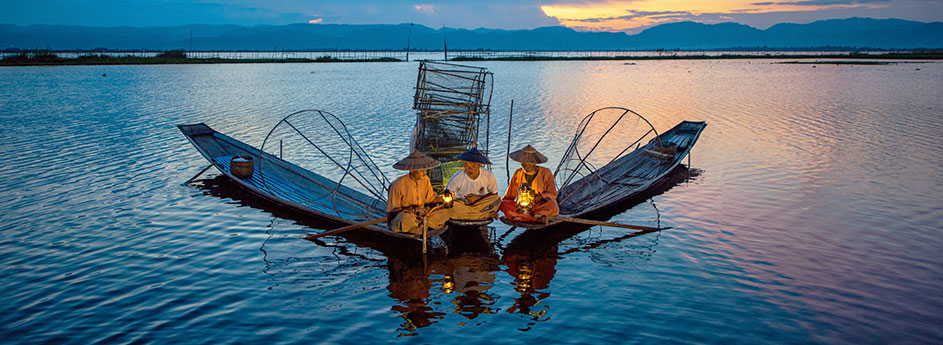About Myanmar
Myanmar (Burma) is situated on the western part of Indochina peninsula, which is in the South-East region of Asia, between Indian Ocean and Pacific Ocean. Its exact location is between North Latitude 9. 30/ and 28. 30/, and between East Longitude 92. 10/ and 101. 11/. It is the second largest country in South East Asia after Indonesia. Myanmar is not a landlocked country. The southern part is open to the sea; the other sides are bordered by China, Laos, Thailand, Bandladesh and India.
Brief in historical background
Myanmar’s greatness in history dates back to the 11th century. There are strong factual evidences that many dynasties had reigned for centuries going back to the pre-Christian era. King Okkalapa built the Shwedagon Pagoda during the lifetime of Buddha. The Vesali dynasty of Rakhine during the early Christian era. The Tagaung dynasty at Hanlin in the second century AD and the Pyu dynasty. There had been kingdoms at Srikshetra & Beikthano near Pyay, the Mon dynasty at Souvanabhumi [Thaton] & Bago.
King Anawarahta:
consolidated the kingdoms and founded the First Myanmar Empire at Bagan in 1044 AD, extending up to the Menam Valley in Thailand. He established the Theravadas Buddhism. Progress with innovations in the cultural field of arts, dance, musical instruments, and masterpieces of architectural designs for the construction of religious edifices that we marvel today. Public utilities dams, roads and education etc. This dynasty reigned for over two centuries, when it was plundered and devastated by the Mongol hordes under Kublai Khan in the 13th century.
King Bayinnaung:
struggled to re-consolidate the kingdom in the 16th century and founded the Second Myanmar Empire [Hamsawady dynasty]. The Second Myanmar Empire stretched from the borders of India to parts of Thailand and Laos. The King built a new capital city called Hamsawady on what is now Bago. To the south of the Shwemawdaw Pagoda, the King had a grand palace, which named Kanbawzathadi. He reigned for 30 years. The Second Myanmar Empire collapsed in 1599 during the reign of King Nanda, his son and successor when King Bagyi of Rakhine and King Thihathu of Inca allied together and fought against him. Hence King Alaungplaya had to re-unify and founded the Last Myanmar Empire [Konebaung dynasty] in 1752. In the 133 years of reign, three Anglo-Myanmar Wars were fought in 1824, 1852 and 1885. Parts of the land were ceded and finally the whole country was annexed as a colony under the British. During the Second World War the Japanese Forces invaded and occupied Myanmar in1942 to mid 1945, when they were defeated to retreat. After two and a half years of re-occupation by the British, Myanmar gained independence as a sovereign state on 4th January 1948.
People & races
Myanmar comprises a family of eight major national races with as many as a hundred and thirty five ethnic minorities, distributed in the different regions of the country. The national races under the term Myanmar comprise Bamar, Chin, Kachin, Kayah, Kayin, Mon, Rakkhine and Shan races. Most of tribal groups still follow their own traditional customs, cultures, costumes, dialects and life-styles.
Religion
Theravada Buddhism is the predominant religion of the majority of the people. There is freedom of worship for all other religions and so, many followers of Christianity, Muslims, Hindus, other Sectarian beliefs including animists and Nat worshippers. All believers of their faiths live in harmony and peace.
Culture
Myanmar lies between two of the world’s great and ancient civilizations- China and India and it has incorporated the finer arts and blended it to the tastes of native traits and characteristics. Buddhism has great influence on the conduct of life, so the people have maintained the tradition of reverence for religion and clergy, obedience and respect for parents, elders & seniors. Every full moon day of the lunar month is celebrated joyously with delicacies, food and charities for a religious, social or seasonal festival. Lavish receptions for a happy or special occasion with music, merry-making, songs and dance. Generally speaking the people are hospitable, friendly and fun loving. But during the Buddhist Lent [from full moon of July to full moon of October] marriages and shifting of residences are a taboo for the laity. Myanmar enjoys a rich heritage of culture and custom.
Climate
Tropical rains and hot and humid but not torrid. Temperate and cooler in mountainous areas. Coolest period is from mid November till end of February with average temperatures 18-26°C. Hottest period is from March till end of May with average temperatures 28-37°C. Monsoon period is from June till October with average rain fall 15 inches and temperature 20-30 C.
Economy
Since 1988, the centrally planned economy was repealed with more liberal market oriented economy. Thus the private sector has been encouraged to do business in domestic & foreign trade and commerce. In keeping with the policy a number of laws had been promulgated. Agriculture, forest produce, minerals, oil, fisheries and tourism industry are the main sectors. Myanmar is making steady progress in rehabilitation by construction projects of dams, bridges, railways, roads, buildings, electricity and public utilities.






